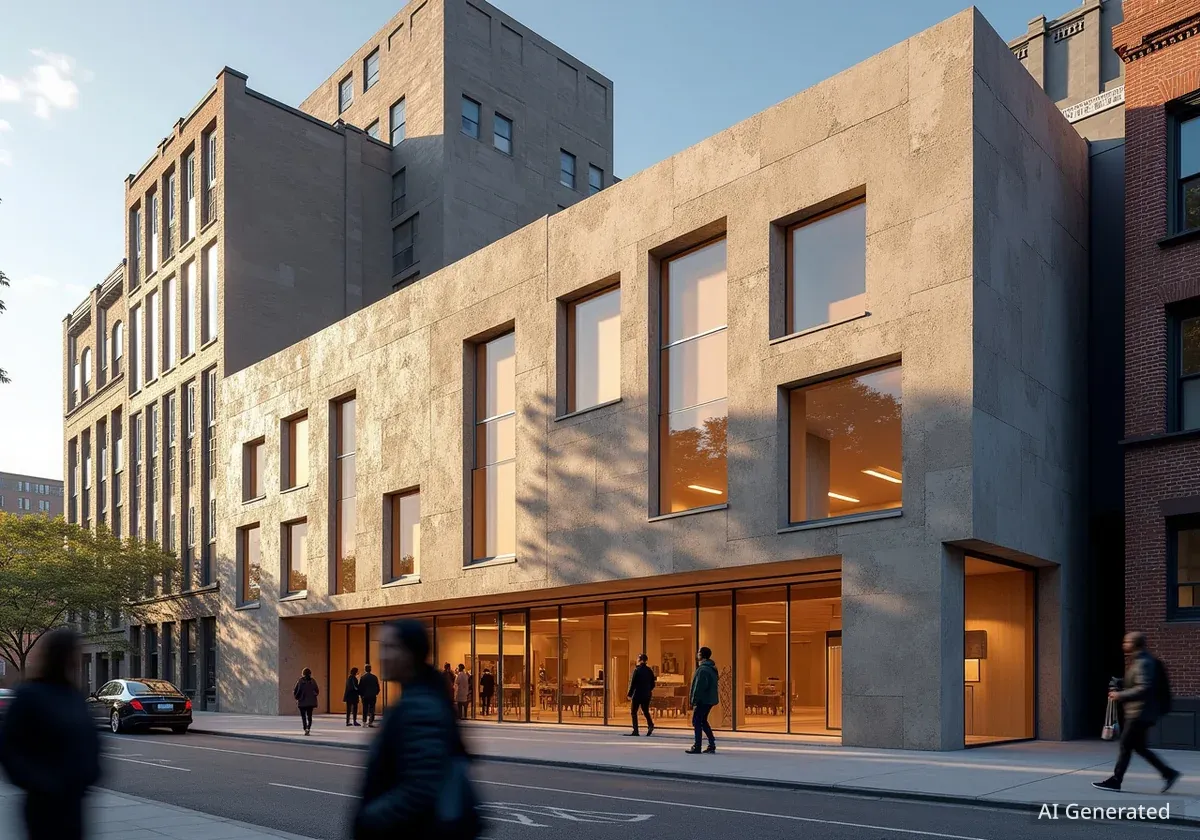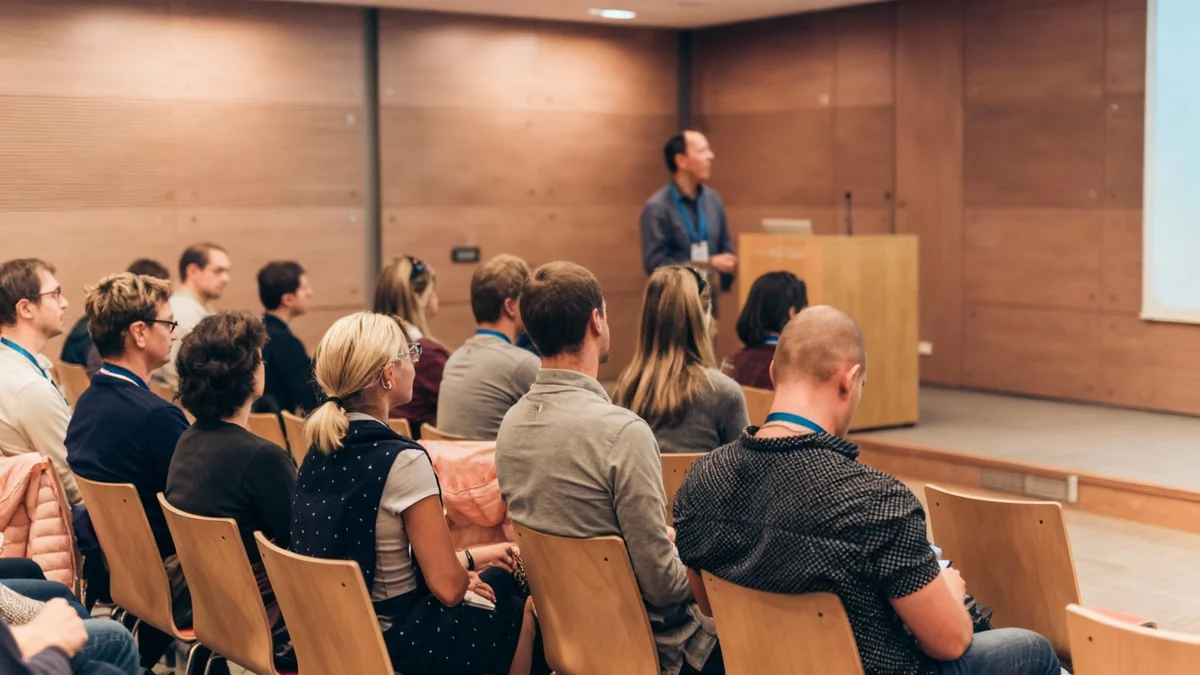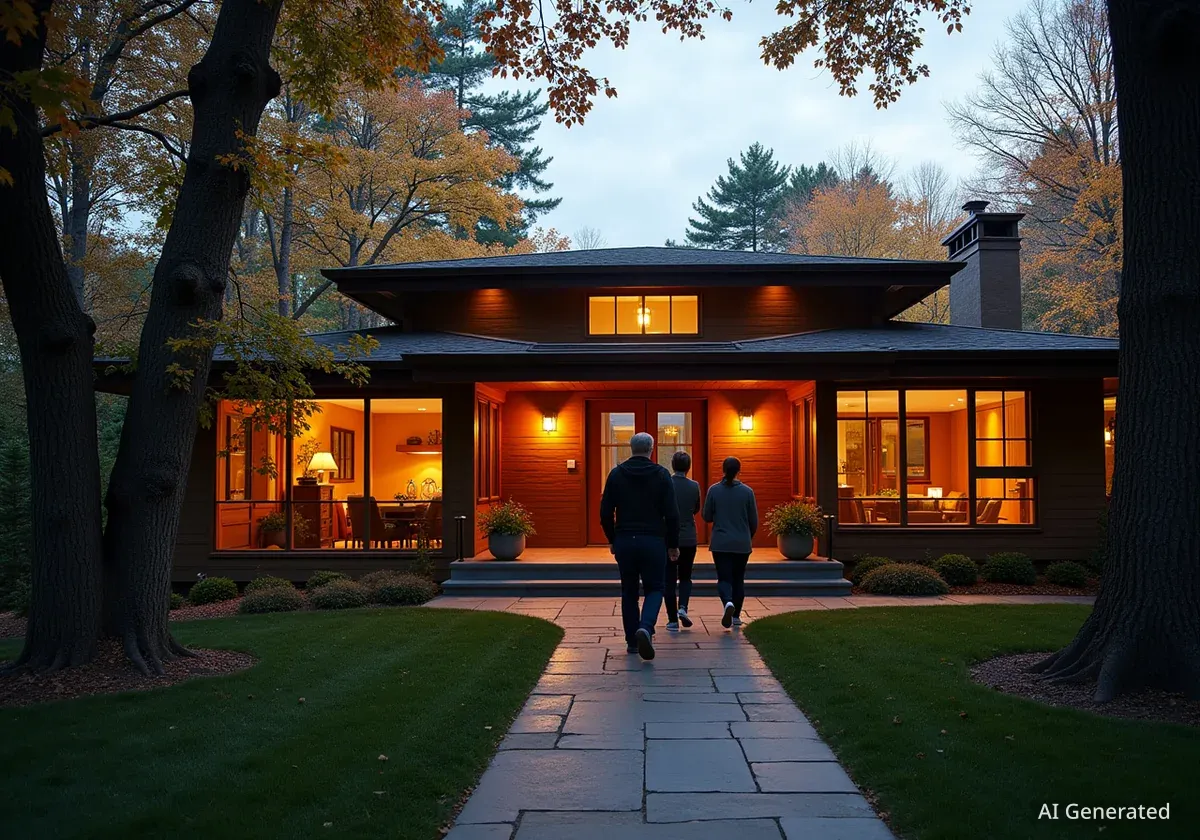Burning Man 2025 showcased a range of experimental architectural installations in Nevada's Black Rock Desert. The festival, which ran from August 24th to September 1st, highlighted innovative designs and sustainable practices. A central feature was the 'Temple of the Deep,' created by Spanish architect Miguel Arraiz Garcia.
This year's event continued its tradition of artistic expression. It focused on large-scale, temporary structures that engage with themes of community, reflection, and environmental consciousness. The installations were designed to withstand the desert's harsh environment.
Key Takeaways
- Burning Man 2025 featured major architectural installations.
- The 'Temple of the Deep' was a central structure, built from untreated Oregon pine.
- Other notable works included 'Our Ouroboros' and 'SsssWhirlwind.'
- Installations emphasized environmental sustainability and interactive design.
Temple of the Deep: A Centerpiece of Reflection
The 'Temple of the Deep' served as the architectural focal point for Burning Man 2025. Designed by Spanish architect and artist Miguel Arraiz Garcia, this structure was a significant part of the festival's experience. It offered a space for quiet contemplation and ritual.
Construction of the temple began on-site in early August, taking 18 days to complete. The entire structure was built using untreated Oregon pine. This choice of material was deliberate, aligning with the festival's environmental principles.
Temple Facts
- Material: Untreated Oregon pine.
- Construction Time: 18 days on-site.
- Fabrication Location: Oakland, California.
- Symbolism: A broken heart, cracked open.
The modular timber structure was fabricated off-site in Oakland, California. It was then transported in sections to the Black Rock Desert. This method ensured efficient assembly while maintaining design integrity.
Design for Desert Conditions and Ritual
The temple's fragmented form was not just aesthetic; it carried deep symbolic meaning. It was intended to represent a broken heart cracked open, symbolizing vulnerability and healing. The design also had practical considerations for the desert environment.
Engineers ensured the structure could withstand the extreme weather conditions of the desert. Open fissures were integrated into the design. These openings allowed air, light, and ultimately fire to move freely through the volume. This was crucial for its ceremonial burning.
"The fragmented form of the temple, intended to symbolize a broken heart cracked open, was engineered to withstand harsh desert conditions while serving as a space for reflection and ritual."
On August 31st, the 'Temple of the Deep' was ceremonially burned. This act is a traditional part of the Burning Man festival. The use of untreated materials ensured that the burn was environmentally safe, adhering to the event's sustainability commitments.
Sustainability Efforts and Other Key Installations
Environmental responsibility was a core aspect of the 'Temple of the Deep' project. In addition to using untreated wood, the scheme included a temporary solar array. This array powered tools and lighting during construction, significantly reducing reliance on diesel generators.
The festival's focus on sustainability extends beyond individual projects. Burning Man aims for a minimal impact on the desert environment. This commitment influences material choices and energy solutions across all installations.
Burning Man's Environmental Commitment
Burning Man has a long-standing commitment to 'Leave No Trace' principles. This includes using sustainable materials, minimizing waste, and cleaning up the desert completely after the event. All structures are designed for either removal or ceremonial burning with minimal environmental impact.
Interactive and Symbolic Artworks
Beyond the temple, Burning Man 2025 featured other significant installations. These included 'Our Ouroboros' and 'SsssWhirlwind,' both offering unique interactive experiences for attendees.
'Our Ouroboros' was a glowing, inflatable sculpture designed by artists Youtian Duan and Kai Zhang. This climbable structure was responsive to human touch. It pulsed with light in response to interaction, creating an interactive loop.
The sculpture's trefoil-knot design symbolized transformation and unity. This interactive element encouraged direct participation from festival-goers. It transformed the artwork into a dynamic, living entity.
SsssWhirlwind: Cycles and Transformation
Another notable installation was 'SsssWhirlwind' by Amy Charbonneau, also known as CreARTive Warrior. This piece combined the chaotic energy of a whirlwind with the wisdom associated with a snake. It aimed to symbolize the power of cycles and transformation in life.
The artist explained the deeper meaning behind the installation. "The idea speaks to the spirals of mental health and the ability to remain anchored as your own eye of calm through any upheaval and the uncomfortable process of shedding outdated skins through continuous transformative events in our lives," the team stated.
These installations collectively highlighted the festival's dedication to art that is not only visually striking but also deeply reflective and interactive. They offer participants a chance to engage with art on multiple levels, both physically and emotionally. The temporary nature of these structures ensures that each year brings a fresh wave of creative expression to the desert landscape.
The Future of Experiential Architecture
The architectural works at Burning Man often push the boundaries of design and construction. They explore temporary structures, material innovation, and interactive art. This year's installations continued that trend, providing insights into future directions for experiential architecture.
Designers at Burning Man frequently experiment with lightweight, modular, and sustainable building techniques. These methods could influence broader architectural practices, especially in temporary installations and event design. The festival acts as a testing ground for new ideas.
The focus on environmental impact, particularly with the 'Temple of the Deep's' untreated wood and solar power, demonstrates a growing commitment to green design. These practices are becoming increasingly important in the global architectural community.
Burning Man's unique environment encourages artists and architects to think creatively about how structures interact with nature and human experience. The temporary nature of the art allows for bolder, more ephemeral designs that might not be possible in permanent urban settings.




